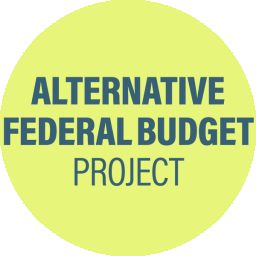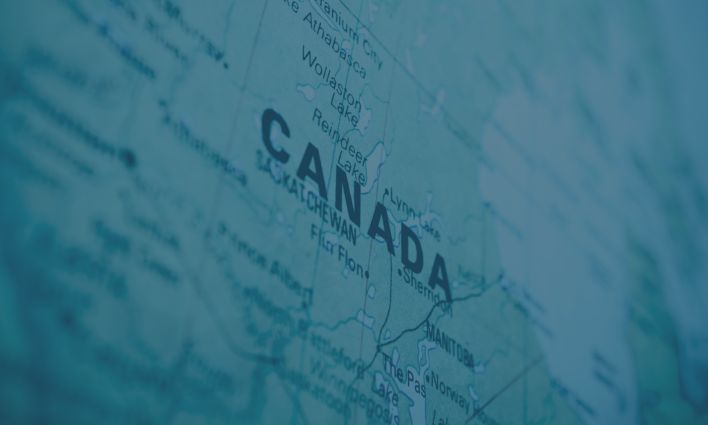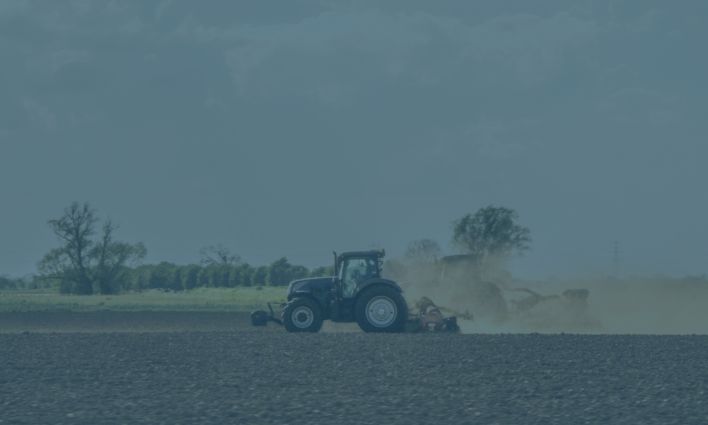Introduction
The world is reeling from a polycrisis, a complex and interconnected set of crises that have emerged and intensified over the past few years, which significantly challenge and threaten global stability and well-being.
These crises stem from the COVID-19 pandemic, recurring extreme climate events, and domestic civil contestations and cross-border conflicts, including the Russian invasion of Ukraine. With steep increases in costs of living, social and economic inequalities are deepening in Canada and around the world. Globally, hunger is currently on the rise for the first time in decades.1
Canada has expressed its commitment to achieving the United Nations Sustainable Development Goals (SDGs) by 2030, taking a strong position in support of gender equality and human rights. Prime Minister Justin Trudeau accepted the UN’s invitation to co-chair the SDG Advocates Group. But delivering on its commitments in a world in turmoil depends on Canada’s policy coherence, investing its fair share, and responding to growing needs.
Overview
The need for policy coherence
With the release of the Indo–Pacific Strategy2 and ongoing conversations about a Canada–Africa Economic Cooperation Strategy (CA–ECS),3 the need for an updated foreign policy is more pressing than ever. The Indo– Pacific Strategy is a solid step in the right direction in terms of clarity and predictability, both domestically and globally, on Canada’s foreign policy priorities. The $2.3 billion over five years committed to this strategy was also welcomed. The aim of the CA–ECS is to outline the challenges that the people of Africa are facing, as well as the opportunities for partnerships and collaboration with industry, government, and civil society. It does not promise to be as comprehensive in scope or ambition as Canada’s strategy for the Indo-Pacific.
Besides these regional strategies, the government has promised to release a feminist foreign policy. It clearly made this commitment in the Minister of Foreign Affairs’ 2021 mandate letter.4 Despite significant consultations and engagement with a range of partners, this policy has still not been released, leaving Canadians, and the world, to wonder if it will ever come to light. The Feminist International Assistance Policy is a robust policy that clearly demonstrates the government’s direction and priority. For example, it directed the government’s significant investments in women’s rights and feminist organizations and movements, as well as sexual and reproductive health and rights. We should expect strong coherence between the Feminist International Assistance Policy and Canada’s broader feminist foreign policy.
There is also more Canada could and should do to show leadership on human rights. To bolster its bid for a seat on the United Nations Human Rights Council, Canada must take concrete actions and make significant investments in support of civil society and human rights. As the space in which civil society actors can respond is shrinking through restrictions on access and on freedom of the press, we witness crackdowns on protesters and human rights defenders. It is more crucial than ever that Canada demonstrates it stands on the side of human rights and their defenders.
Substantial, predictable, and effective international assistance investments
Overall, it is difficult to comprehend that Canada is allocating fewer resources towards improving the global situation, given the current state of the world. Lowering the international assistance envelope restricts the resources that can be used to solve the world’s greatest humanitarian and development problems. It also sends a two-fold message to partners and allies both in the Global South and the Global North. To the Global South, it says that they are only partners when it is convenient for Canada. To the Global North, it says that Canada is not a predictable, reliable ally on which they can count.
Although the 2022-23 budget did see an increase in the international assistance envelope, reaching $8.15 billion, last year’s budget (2023-24) proved to be a step backwards, with a commitment of only $6.8 billion. This represented a 15 per cent drop at a time when needs are higher than they have been in a long time. It has had concrete consequences, with many initiatives, such as the Charlevoix Declaration5 falling by the wayside.
Coupled with the substantial decrease to the international assistance envelope, there are recurrent issues in recent federal budgets that show a lack of transparency and predictability. Not only is there opacity in precisely how much is being allocated and where the funds are coming from, but Canadians are left guessing as to how much is to be expected past the end of the current fiscal year. Clarity on how much the government intends to commit for multiple years would go a long way in reinforcing planning, strategy-making, and trust.
Increased investment in global cooperation means increased investment in a safer and more prosperous future for Canadians and the world, with fewer conflicts, more trading partners for Canadian businesses, and more robust and stable democracies. Besides being the principled path to take, investing in development contributes to global growth, stability, and justice. It is the right, and the smart, thing to do.
Addressing Canada’s climate impacts
The $5.3 billion climate envelope moves in the right direction for climate mitigation and adaptation efforts. However, there are additional steps required to truly make a significant, net-positive impact on climate and biodiversity.
The first step is to transition the Canadian economy more rapidly away from fossil fuels and into a green economy. Given that climate change and the environment is both a domestic and international issue with cross- sectoral implications, including in migration, food security and hunger, and conflict, this issue must be addressed holistically. When viewed as a collective issue, nations of the world, especially the biggest historical polluters, can tackle the matter effectively.
Actions
Building on the existing roadmaps set out in previous budgets, policy documents, and international agreements, and informed by recent research and empirical findings, the AFB is poised to implement a set of strategic actions in four key areas, catalyzing Canada’s shift towards addressing the polycrisis and building a sustainable future world. To effectively realize the UN’s Sustainable Development Goals, the AFB will actively pursue the following measures.
The AFB will commit adequate resources to overhauling Canada’s foreign policy with the aim of making it truly feminist. Foreign policy will also be comprehensive and detailed in its regional engagements.
The AFB will commit to facilitating an open consultative process to finalize and publish the long-awaited feminist foreign policy and institutionalize its periodic review to ensure that the policy stays fit- for-purpose. The consultative process should ensure coherence and complementarity between the feminist foreign policy, regional policy documents outlining Canada’s engagement with the Indo–Pacific region and the African continent, and the Feminist International Assistance Policy. The AFB will produce a comprehensive document detailing Canada’s cross-sectoral engagement with Africa by September 2024.
In ensuring policy coherence across all pillars of Canada’s foreign engagements, the AFB will match investments in military power with funding that supports threat deterrents, conflict prevention, and poverty alleviation. This one-for-one policy, which matches every military dollar with a dollar for human development, will be aligned with the goal to increase Official Development Assistance by 2030 while serving as a longer-term compass for Canada’s feminist foreign policy. The AFB will also stop providing military equipment to governments that engage in human rights violations.
The AFB will establish an inter-ministerial committee to facilitate coordination of the government’s many ambitions and dialogue with civil society at all levels of government. By reporting directly to the prime minister through the Privy Council, clarity and transparency will be brought to topics integrating the humanitarian–development– peacebuilding nexus and aid flows, among others. The committee will be co-chaired by various civil society groups, including Indigenous and diaspora organizations. This will contribute to the construction of a robust foundation for a whole-of-society approach to policy-making.
The AFB will outline a plan to increase Canada’s international assistance envelope each year over the remaining budget cycles until 2030; to increase the transparency and predictability of its international assistance funding; and, in line with the government’s own commitment to year-on-year increase, to realize the Sustainable Development Goals. This approach aligns with the government’s commitment to Open Government Partnership calls for establishing clear and shared understandings of funding baselines, timelines, and increases.
The AFB will include in the multi-year projections the proportion of direct allocation to country partners in assistance programs. Government ministries will move away from opaque funding announcements of repurposed allocations and instead opt for predictability and transparency. If announcements are made, they will explicitly state if the funding is truly new money or from what pool of funds it comes from.
In line with its Grand Bargain Commitments,6 the AFB will move to provide 25 per cent of humanitarian assistance directly to local responders by 2027-28. In a similar fashion, the AFB will increase localization initiatives for development and peacebuilding programs and prioritize building trust with local partners by investing in them for longer- term programming. This includes reducing the reporting burden and increasing the government’s “risk appetite” for local organizations.
To achieve better results, the AFB will commit $10 million to improve coordination within Global Affairs Canada and ensure better collaboration between development, humanitarian, and peacebuilding divisions. This commitment entails modifying existing policies, practices, and procedures to better integrate a triple-nexus approach.
The AFB will promote civic space and democracy by providing specific funding to support human rights and democracy, especially those in the Global South, prioritizing those that work towards the promotion of women and marginalized groups. In line with the Women’s Voice and Leadership Program, the government will commit $195 million dollars over five years (2024–2025 to 2029–2030) to support and protect human rights defenders, civic space, and democracy, and to support activists exiled in Canada to continue their work. The AFB will also commit to taking a clear stance on issues of human rights and democracy and be outspoken about countries and institutions that violate them, doing so in an objective and principled fashion.
The AFB will leverage its $5.3 billion climate finance envelope to support bold reforms within multilateral development banks and financial institutions, expand access to climate finance to government and non- government actors in global majority countries, and develop operational models to adequately address the risks of loss and damage.
The AFB will contribute its fair share of new, additional, and adequate finance to the Loss and Damage Fund, scale up accessible grant support, and implement its operationalization, as outlined during the Conference of the Parties.7 Canada will continue to stress the importance of a rights- based approach to climate action in international forums, building on examples of nation-to-nation collaboration with Indigenous Peoples in Canada. Innovative ways to contribute, including debt for loss and damage swaps, should also be heavily considered.
The AFB will also commit resources to enhance synergies between climate change and biodiversity agendas. This will include diverting funds from public programs that support large-scale polluters domestically and internationally (see the Environment and Climate Change and Fair and Equitable Transition chapters).







